Customer complaints are never easy to hear, but they may be one of the most valuable sources of feedback your organization can receive. While most customers simply leave without saying a word, the ones who take the time to share their frustration give you a second chance to fix the issue and improve. The challenge for call centers is learning how to capture these complaints and turn them into meaningful improvements.
At SQM Group, we know that customer complaints often reveal opportunities for lasting change. SQM research shows that when organizations approach frustration as feedback, they see higher First Call Resolution (FCR), better customer satisfaction, and stronger loyalty. Complaints can feel like a setback in the moment, but they often hold the key to transforming service quality and building stronger connections with customers.
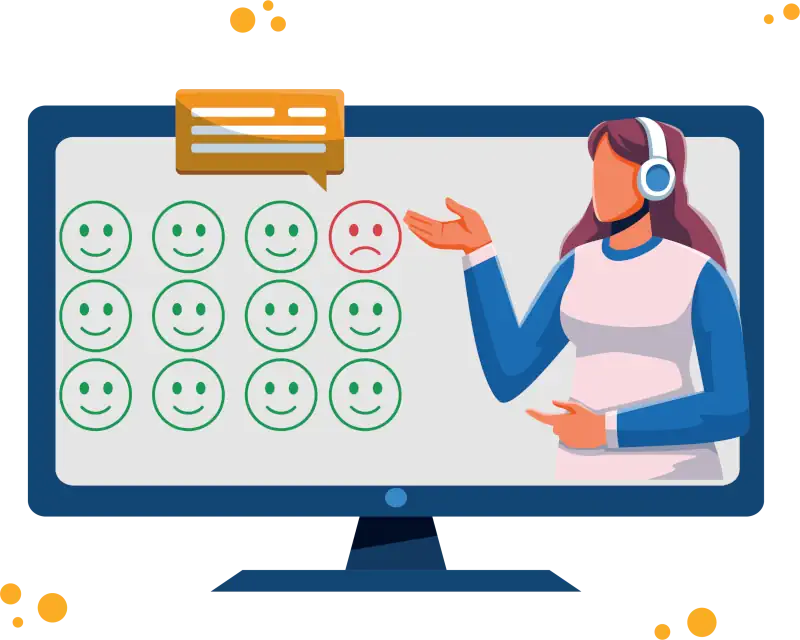
In this blog, we’ll explore what frustration really tells you, how to structure complaints into usable feedback, and ways to turn that feedback into improvements. By combining people-first practices like listening and acknowledgment with structured tools such as call recording, CRM data, and real-time coaching, complaints can become one of the most powerful drivers of customer experience success.
What Does Frustration Really Tells You?
A complaint is rarely about a single incident—it usually reflects a deeper gap between what a customer expected and what they actually experienced. This gap could be tied to slow service, unclear communication, or even a lack of empathy during the interaction. By looking closely at what customers are frustrated about, organizations can identify weak spots in their processes and address them directly.
Frustration also reveals how customers feel during their journey, not just whether their issue was resolved. A customer may get their problem fixed but still walk away upset if they felt ignored or rushed. This emotional feedback is just as important as the resolution itself because it influences loyalty and long-term trust.
Complaints often act as early warning signs of larger issues. If the same type of frustration is voiced by multiple customers, it points to a systemic problem rather than a one-off error. Paying attention to these signals helps organizations act quickly before the issue impacts more customers or damages their reputation.
Complaints are more than problems; they’re roadmaps. Each frustration highlights the next improvement your organization can make.
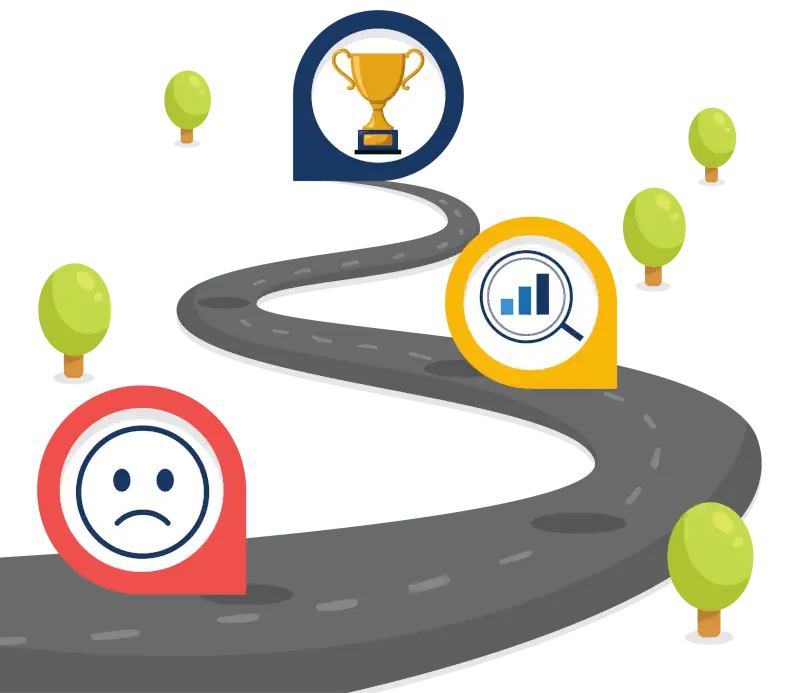
How Do You Turn Frustration into Feedback That Drives Change?
For complaints to make a difference, they need to be more than conversations between a customer and an agent. If frustrations remain only in call notes or emails, they are easily lost and cannot be analyzed effectively. Structured feedback systems make it possible to capture, categorize, and track issues in a way that drives real improvements.
While many organizations see complaints as headaches, top-performing businesses view them as a resource for growth. Treating complaints this way, means using them to build stronger processes and relationships. At SQM, we use tools such as the mySQM™ portal to help organizations collect Voice of the Customer (VoC) data and link it to quality and compliance metrics.
By categorizing complaints into themes like communication, resolution, or compliance, teams can spot patterns and prioritize fixes. This structured approach turns what might feel like noise into actionable insights for leaders and frontline staff alike. When complaints are logged, organized, and connected to measurable outcomes, they stop being one-time frustrations and start becoming powerful inputs for continuous improvement.
6 Practical Ways to Turn Complaints into Feedback
1. Actively Listen Before Responding
Customers want to feel heard before they want a solution. Allowing them to fully explain the issue without interruption shows respect and gives you the full picture. Often, this simple act of listening can calm the situation and make resolving the problem much easier.
Active listening also provides valuable context that can shape how you respond. Instead of jumping straight into problem-solving, you give yourself time to understand the root cause of the frustration. This prevents misunderstandings and ensures your solution addresses the real issue.
- Let the customer explain their full issue without interruption.
- Use phrases like “I understand” or “Tell me more” to show you’re actively listening.
- Repeat key details to confirm you understand their concern.
- Avoid rushing to solutions before the customer feels fully heard.
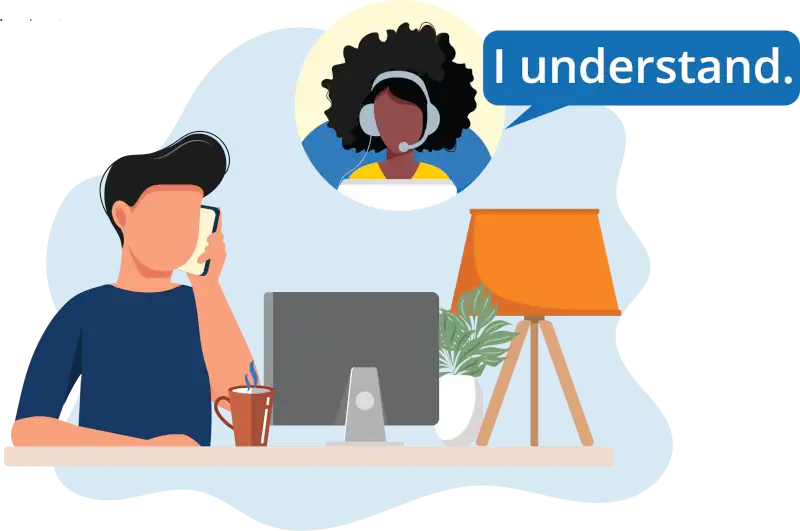
2. Acknowledge and Thank the Customer
A complaint may feel negative, but it’s also valuable input that most customers never share. Thanking them for bringing it forward shows appreciation and reassures them their voice matters. This acknowledgment sets the tone for a more constructive conversation.
When customers see that their frustration is welcomed as feedback, they’re more likely to remain loyal. When handled well, a complaint can be one of your strongest loyalty builders. Customers who see quick, respectful resolution often become more loyal and are more likely to recommend your service to others.
- Thank the customer sincerely for sharing their concern.
- Validate their frustration by acknowledging the situation.
- Use empathetic phrases like, “I can see how that would be frustrating.”
- Assure them their feedback will be used to improve service.
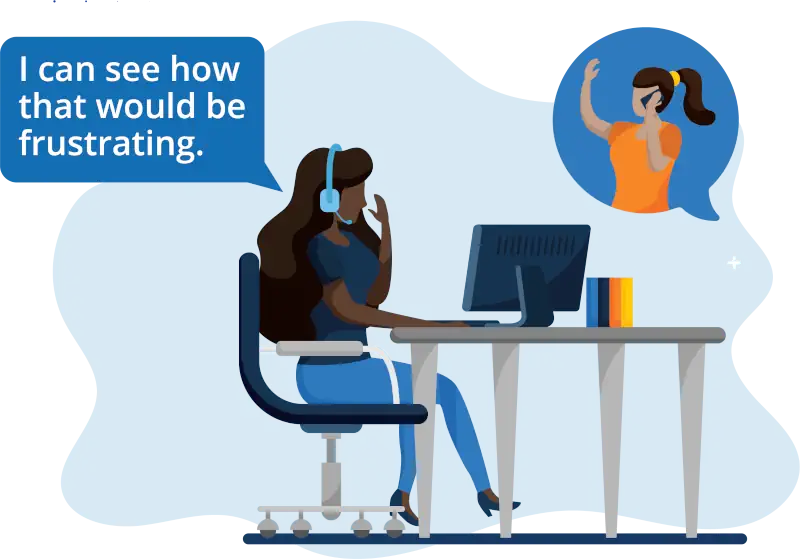
3. Use Call Recording and Customer Quality Assurance (CQA)
Pairing call recordings with post-call surveys lets both the customer and the quality assurance team evaluate the same interaction. This dual approach highlights whether frustration stemmed from service quality, compliance, or communication gaps. SQM’s Customer Quality Assurance (CQA) is one of the best ways to drive improvements in First Call Resolution (FCR), because it combines compliance data from evaluators with service quality data from customers.
Unlike surveys alone, CQA incorporates both the customer’s view and internal compliance metrics. Customers judge whether their issue was resolved, while evaluators confirm if policies and procedures were followed. This balanced view ensures complaints are addressed fairly and thoroughly.
- Pair post-call surveys with call recordings for a complete picture.
- Compare customer outcomes with QA compliance checks.
- Identify if frustrations stem from communication, compliance, or service quality.
- Use findings to coach agents and improve First Call Resolution (FCR).
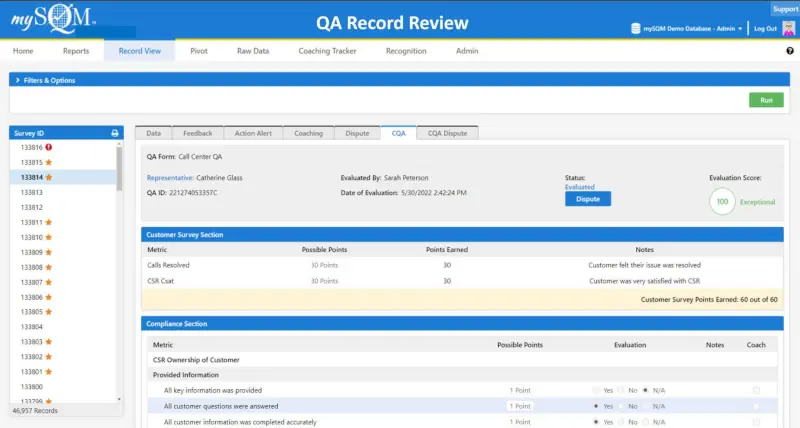
4. Connect Feedback with CRM Notes
CRM notes give critical context to survey results and complaints. Customers judge the outcome of the call, while CRM data shows why it succeeded or failed. SQM has found that combining survey results with CRM notes complement each other: one shows the customer’s view of the outcome, while the other shows the organization’s record of what happened.
This approach works especially well when agents take detailed notes during calls. When those notes are combined with survey feedback, leaders can pinpoint exactly where breakdowns happen. Over time, this creates a clearer picture of customer frustrations and helps teams prevent repeat problems.
- Review survey responses alongside agent notes for context.
- Flag recurring issues tied to poor documentation or missing details.
- Track unresolved issues to see if they connect back to the same process gap.
- Use CRM insights to guide coaching or process improvements.

5. Provide Real-Time Coaching and Recovery
Some complaints can be prevented before they escalate. Real-time monitoring tools can flag when an agent’s tone or approach is causing frustration, allowing immediate adjustments. mySQM™ Automated QA solution provides real-time service recovery notifications so agents can address poor CX, call compliance issues, or low QA scores while the customer is still on the line.
Quick service recovery also strengthens customer trust. When customers see that issues are corrected right away, they feel valued and respected. This makes it more likely that a potentially negative experience will turn into a positive story they share.
- Use monitoring tools to flag negative sentiment during calls.
- Prompt agents to adjust tone or offer clearer solutions.
- Send real-time notifications for compliance or service issues.
- Empower agents to fix problems before they escalate.

6. Analyze Trends, Not Just Incidents
Complaints shouldn’t be treated as isolated events. Tracking them over time can reveal patterns in training needs, process issues, or communication breakdowns. SQM’s advanced call analytics combine surveys, sentiment, and compliance data to create a complete view of what drives frustration and satisfaction.
This type of analysis also helps leaders prioritize improvements. Instead of chasing one-off fixes, they can focus on the areas that impact the most customers. As a result, complaints become a powerful tool for long-term customer service improvement.
- Look for recurring complaints in QA results or survey data.
- Identify which issues are isolated versus systemic.
- Prioritize fixes based on the most common frustrations.
- Track changes to see if adjustments reduce complaints.
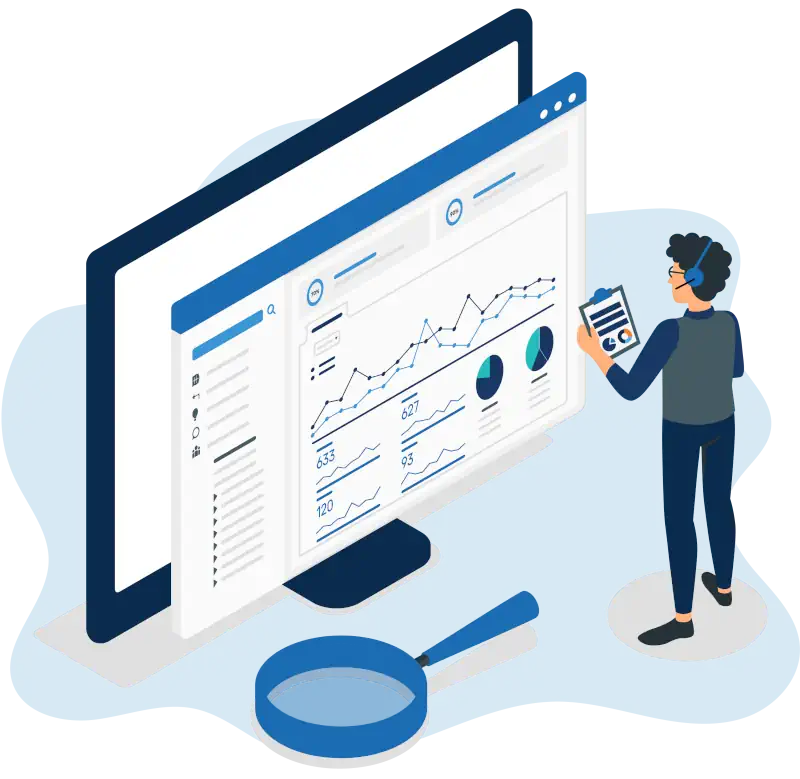
Complaints Aren’t Setbacks, They’re Drivers of Improvement
Customer complaints are never pleasant, but they can be powerful drivers of change when handled correctly. By actively listening, acknowledging concerns, and structuring feedback through tools like CQA, CRM, real-time monitoring, and analytics, organizations can turn frustration into actionable insights.
The bottom line is simple: complaints aren’t setbacks, they’re drivers of improvement. They reveal where you need to improve and give you the chance to win back customer trust. At SQM, we believe that complaints are not failures—they are opportunities to improve service, strengthen loyalty, and build a healthier customer experience.
